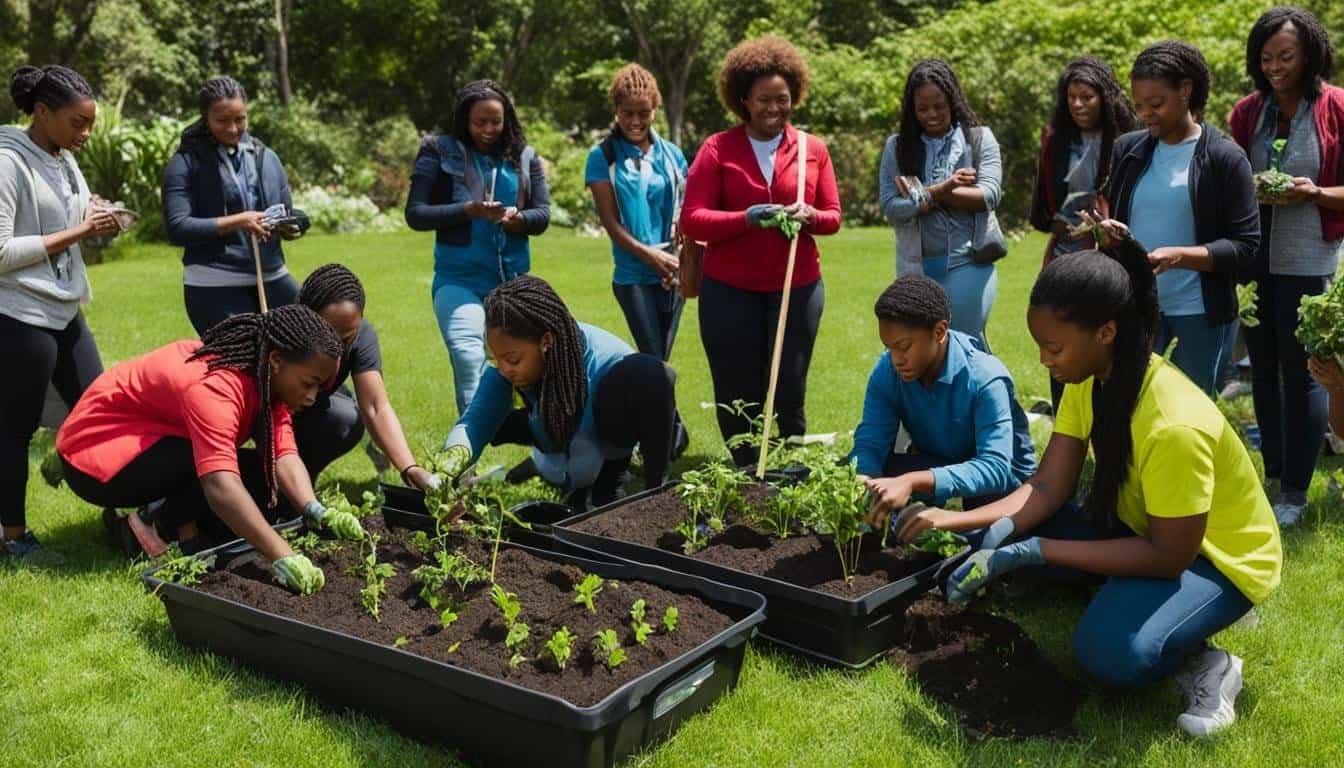Active Learning Strategies for Sustainability Education
In today’s rapidly changing world, it is crucial for students to receive a comprehensive education that equips them with the skills and knowledge to address pressing global challenges. For this reason, active learning strategies have emerged as key educational tools, particularly in the field of sustainability education. By engaging students in hands-on learning experiences and promoting critical thinking, active learning methods foster a deep understanding of environmental issues and empower students to become active agents of change.
Active learning encompasses a range of educational strategies, such as hands-on learning, experiential learning, and project-based learning. These approaches shift the focus from traditional teacher-centered instruction to student-centered, participatory learning. They encourage students to actively analyze and approach sustainability challenges, providing them with the practical skills and knowledge needed to tackle these issues in their future careers.
Key Takeaways:
- Active learning strategies promote student engagement and critical thinking in sustainability education.
- Hands-on learning, experiential learning, and project-based learning are effective active learning methods.
- Active learning develops practical skills that can be applied to real-world sustainability challenges.
- These educational strategies facilitate a shift from teacher-centered to student-centered learning.
- By embracing active learning, students become empowered to address global sustainability issues.
The Importance of Active Learning in Sustainability Education
Active learning plays a crucial role in sustainability education, offering numerous benefits to students and fostering their engagement in real-world problem-solving. By actively participating in their own learning process, students develop a deep understanding of environmental issues and gain practical skills that can be applied to sustainability challenges.
One of the key advantages of active learning approaches, such as project-based learning and challenge-based learning, is their ability to create a student-centered learning environment. Unlike traditional teacher-centered education, active learning methods empower students to take ownership of their learning journey, becoming active agents of change. They collaborate with their peers, think critically, and develop innovative solutions to complex sustainability problems. This hands-on approach not only equips students with the knowledge they need but also prepares them to address sustainability issues beyond the classroom.
“Active learning allows students to apply what they learn in a practical way, helping them develop the skills required to tackle real-world sustainability challenges.”
The Benefits of Active Learning in Sustainability Education
The benefits of active learning in sustainability education are multifold. Through active learning, students acquire not only subject-specific knowledge but also a range of transversal skills that are highly valued in the professional world. These skills include critical thinking, problem-solving, communication, teamwork, and conflict resolution, among others.
Moreover, active learning promotes a deeper understanding of sustainability issues by allowing students to engage with experiential learning. Through hands-on activities, simulations, field trips, and real-world projects, students have the opportunity to apply theoretical concepts to practical situations, fostering a holistic understanding of sustainability.
Student Empowerment and Beyond
Active learning empowers students to become lifelong learners and advocates of sustainability. By actively participating in their education, students gain a sense of ownership and responsibility for their learning process. They develop the confidence to voice their ideas, think critically, and take action.
This empowerment extends beyond the classroom. Active learning equips students with the knowledge, skills, and passion needed to make a positive impact on the world. These students go on to become sustainability leaders, driving change through their personal and professional endeavors.
“Active learning transforms students into active agents of change, fueling their passion for sustainability and inspiring them to create a better future.”
Challenges in Implementing Active Learning Strategies
Implementing active learning strategies in sustainability education can present challenges for both teachers and students.
Students may initially question these innovative teaching methods and perceive them as mere games. It’s important for educators to clearly communicate the methods and goals of active learning to students, helping them understand the seriousness and relevance of these approaches.
Additionally, the shift from a teacher-centered approach to a student-centered approach requires teachers to adapt to new roles and responsibilities. Teachers may need to relinquish their traditional role as the primary provider of knowledge and instead act as facilitators, guiding students through the learning process. This change in roles can bring uncertainties and additional time and skills are required from the facilitating teacher.
Overall, the implementation of active learning strategies in sustainable education demands overcoming initial skepticism from students and adaptability from teachers. It requires a shift in perspective and an understanding of the transformative power of student engagement. By addressing these challenges, educators create an environment that fosters critical thinking, problem-solving, and a deep understanding of sustainability issues.
The Benefits of Active Learning for Sustainability Education
Despite the challenges, active learning methods in sustainability education offer numerous benefits that outweigh the difficulties. Active learning not only engages students in the learning process but also promotes the development of essential transversal skills and sustainability competencies.
Development of Transversal Skills
Active learning methods, such as teamwork, communication, and conflict resolution, are critical for addressing sustainability challenges. By actively participating in hands-on activities and collaborative projects, students enhance their transversal skills, enabling them to work effectively in diverse teams and navigate real-world sustainability issues successfully.
Building Essential Sustainability Competencies
Active learning outcomes go beyond the acquisition of knowledge. Students engage in critical thinking, problem-solving, and systems thinking, developing essential sustainability competencies. These competencies empower graduates to become continuous learners, adapt their skills and knowledge to different sustainability issues, and drive sustainable change in their personal and professional lives.
To visually represent the benefits of active learning for sustainability education, here is a table showcasing the key advantages:
| Benefits of Active Learning in Sustainability Education |
|---|
| Development of transversal skills (teamwork, communication, conflict resolution) |
| Building essential sustainability competencies (critical thinking, problem solving, systems thinking) |
| Empowering graduates to become continuous learners and adapt to diverse sustainability challenges |
By embracing active learning strategies in sustainability education, students not only develop a deep understanding of environmental issues but also gain the necessary skills and competencies to create a sustainable future. The power of active learning lies in its ability to transform students into active agents of change, equipped with the knowledge and abilities to address real-world sustainability challenges effectively.
Case Studies of Active Learning in Sustainability Education
To illustrate the effectiveness of active learning in sustainability education, let’s explore some compelling case studies from various disciplines.
In the Loop Workshop – Materials Education
In the field of materials education, a workshop called “In the Loop” was organized to provide participants with an immersive learning experience in critical materials and the circular economy. During this workshop, participants engaged in a serious game that challenged them to navigate the complexities of material consumption, waste management, and resource recovery. By actively participating in the game, students not only acquired in-depth knowledge about sustainable materials but also developed critical thinking and problem-solving skills. This hands-on approach allowed them to experience how their choices and actions impact sustainability in the real world.
Assessing Policy Intervention – Sustainable Transportation
Another case study focused on assessing the sustainability implications of a proposed policy intervention related to electric cars. Using an active-learning toolkit, students collaborated to gather relevant data, perform analyses, and evaluate the potential environmental and social impacts of the policy. Through this project-based learning approach, students gained a comprehensive understanding of the complex issues surrounding sustainable transportation. By applying their knowledge and skills, students actively contributed to the decision-making process and developed practical solutions for promoting sustainable mobility.
These case studies highlight the practical application of active learning strategies in sustainability education. By engaging students in hands-on learning activities and real-world problem-solving, active learning enhances their understanding of sustainability and equips them with the necessary skills to create positive change.
The Role of Constructivism in Sustainability Education
Constructivism plays a crucial role in sustainability education by promoting student-centered learning and active participation. Through hands-on activities and collaborative problem-solving, students are empowered to construct their own understanding of sustainability issues and develop critical thinking skills. This student-centered approach allows for the exploration of multiple perspectives, encouraging students to challenge existing norms and assumptions and actively contribute to addressing sustainability challenges.
By engaging students in hands-on activities, constructivism fosters active participation in their own learning process. Rather than passively receiving information, students actively construct their knowledge and meaning through their experiences. This active participation enhances their understanding of sustainability issues and equips them with the skills necessary for problem-solving and critical analysis.
“Constructivism allows students to learn by doing, giving them the opportunity to apply their knowledge and skills in real-world contexts.”
Through constructivist approaches, students are encouraged to become active agents in their learning journey. They take on the responsibility of constructing their own knowledge, allowing for a deeper and more meaningful understanding of sustainability concepts. This active role promotes a sense of ownership and empowerment, motivating students to actively engage in addressing sustainability challenges both inside and outside the classroom.
Benefits of Constructivism in Sustainability Education:
- Encourages student-centered learning
- Develops critical thinking skills
- Fosters active participation
- Promotes problem-solving abilities
- Enhances understanding of sustainability issues
Overall, constructivism serves as a powerful framework in sustainability education, enabling students to actively participate in their own learning, develop critical thinking skills, and contribute to addressing sustainability challenges. By embracing constructivism, educators can create an engaging and transformative learning environment that empowers students to become agents of positive change.
| Benefits of Constructivism in Sustainability Education |
|---|
| Encourages student-centered learning |
| Develops critical thinking skills |
| Fosters active participation |
| Promotes problem-solving abilities |
| Enhances understanding of sustainability issues |
Incorporating Sustainability into Disciplinary Education
In today’s rapidly changing world, it is crucial to prepare students in various disciplines to address sustainability challenges within their specific fields. By integrating sustainability concepts into disciplinary education, students gain a deep understanding of the intersection between their chosen field and environmental responsibility. Let’s explore how sustainability can be incorporated into different disciplines, including architecture, engineering, geography, and marketing.
Sustainability in Architecture
In the field of architecture, students can learn about sustainable design principles and incorporate environmental considerations into their projects. By integrating sustainable practices such as energy-efficient design, use of sustainable materials, and implementing green building techniques, future architects can play a significant role in creating a more sustainable built environment.
Sustainability in Engineering
Engineers have a pivotal role in developing innovative solutions to environmental challenges. By integrating sustainability into engineering education, students can explore how to design and develop technologies and infrastructure that minimize their environmental impact. Sustainable engineering practices include developing renewable energy sources, designing efficient transportation systems, and implementing sustainable waste management solutions.
Sustainability in Geography
Geography courses provide an excellent opportunity to explore the complex relationship between human activities and the natural environment. By integrating sustainability into geography education, students can examine the impacts of human activities on ecosystems, climate change, and sustainable land management. This interdisciplinary approach equips students with the knowledge and skills to address pressing environmental challenges.
Sustainability in Marketing
Marketing plays a crucial role in promoting and shaping consumer behavior. By integrating sustainability into marketing education, students can explore how to promote sustainable products, encourage responsible consumption, and develop marketing strategies that align with environmental and social values. This approach empowers future marketers to advocate for sustainable practices within their field.
Incorporating sustainability into disciplinary education prepares students to become sustainability champions within their respective fields. By fostering a deep understanding of sustainability principles and encouraging critical thinking and innovation, we can create a more sustainable world.
Table: Comparison of Sustainability Integration in Different Disciplines
| Discipline | Sustainability Integration |
|---|---|
| Architecture | – Incorporating sustainable design principles and practices – Integrating green building techniques |
| Engineering | – Designing sustainable technologies and infrastructure – Developing renewable energy sources |
| Geography | – Exploring the impacts of human activities on the environment – Sustainable land management |
| Marketing | – Promoting sustainable products and responsible consumption – Developing marketing strategies aligned with environmental values |
Success Factors and Obstacles in Implementing Active Learning in Sustainability Education
Implementing active learning strategies in sustainability education requires careful consideration of success factors and potential obstacles. To ensure the effective implementation of active learning, educators should focus on the following key success factors:
- Create a supportive and interactive learning environment: A positive learning environment that fosters student engagement and collaboration is essential to the success of active learning. Providing a safe space for students to express their ideas and opinions, and encouraging open dialogue can enhance student learning outcomes.
- Provide clear communication about the goals and methods of active learning: It is crucial to clearly communicate the purpose and benefits of active learning to students. By explaining how active learning strategies contribute to their overall learning experience and future success, students are more likely to actively engage in the learning process.
- Ensure faculty support and training: Faculty support and training play a crucial role in the successful implementation of active learning. Faculty members should be familiar with the active learning strategies and receive proper training to effectively facilitate student-centered learning activities and projects.
Despite the numerous benefits of active learning, there are also potential obstacles that educators may encounter:
- Resistance to change: Some students and faculty members may be resistant to adopting active learning strategies, as they may be accustomed to traditional lecture-based teaching methods. Educators must address resistance by clearly explaining the rationale behind active learning and showcasing its benefits.
- Lack of resources: Implementation of active learning may require additional resources, such as materials and technology, which can pose challenges for institutions with limited budgets. Innovative and cost-effective solutions should be explored to overcome resource limitations.
- Time constraints: Active learning strategies often require more time than traditional teaching methods. This can be a challenge within the constraints of a fixed curriculum. Educators should carefully plan and allocate time for active learning activities to ensure a balance with other course requirements.
Overcoming these obstacles requires a commitment to sustainability education and a focus on continuous improvement. By addressing these challenges head-on and implementing strategies that promote student engagement and faculty support, educators can create a vibrant active learning environment that enhances student learning outcomes and prepares them for a sustainable future.
Future Research and Innovation in Active Learning for Sustainability Education
The field of active learning for sustainability education is constantly evolving, offering new avenues for research and innovation. As educators continue to explore the effectiveness of active learning strategies, further investigation is needed to assess the long-term impacts on students’ sustainability knowledge, skills, and behaviors. This research will provide valuable insights into the lasting benefits of active learning in promoting sustainability education.
In addition to research, innovation plays a vital role in advancing sustainability education. By developing innovative active learning approaches and tools specifically tailored to sustainability education, educators can enhance student engagement and improve learning outcomes. These innovations can take various forms, such as interactive digital platforms, virtual simulations, or augmented reality applications, which immerse students in realistic sustainability scenarios and foster deep learning experiences.
Furthermore, integrating technology into active learning practices can be a catalyst for further innovation in sustainability education. Technological advancements, such as data visualization tools and online collaboration platforms, can revolutionize the way active learning is implemented and facilitate a more immersive and interactive learning environment for students.
Research and innovation in active learning for sustainability education are crucial for preparing students to tackle the complex sustainability challenges of the future. By staying at the forefront of research and embracing innovative approaches, educators can continuously improve their teaching methods and effectively equip students with the knowledge and skills needed to create a sustainable future.
Future research and innovation in active learning should also explore the intersectionality between sustainability and other disciplines. Collaborations between sustainability experts, scientists, engineers, and social scientists can lead to a more holistic approach to education that integrates sustainability seamlessly into various fields and promotes interdisciplinary collaboration.
Areas for future research and innovation in active learning for sustainability education:
- Exploring the long-term impacts of active learning strategies on students’ sustainability knowledge, skills, and behaviors
- Developing innovative active learning approaches and tools specific to sustainability education
- Integrating technology and digital platforms to support active learning in sustainability education
- Investigating the intersectionality between sustainability and other disciplines
By actively pursuing research and embracing innovation, educators can continuously improve active learning strategies in sustainability education and empower students to become effective agents of change in building a more sustainable future.
Promoting Lifelong Sustainability Engagement Through Active Learning
Active learning strategies in sustainability education have the potential to promote lifelong engagement and advocacy for sustainability. By engaging in hands-on learning experiences, students develop a deep understanding of sustainability issues and acquire the skills and knowledge needed to address them.
This empowers students to become agents of change, advocating for sustainability in their personal and professional lives. Through active learning, students not only gain the necessary competencies for solving sustainability challenges but also develop a passion and commitment to environmental responsibility. This lifelong engagement is crucial for creating a sustainable future for generations to come.
The Benefits of Lifelong Sustainability Engagement
By actively participating in sustainability education, students develop a strong connection to the principles and practices of sustainability. This connection goes beyond the classroom and becomes a part of students’ everyday lives, influencing their choices and actions.
Engaging in active learning through hands-on experiences allows students to apply their knowledge and skills in real-world settings. This practical application fosters a sense of agency and empowerment, as students see the impact of their actions and contributions to sustainability efforts.
Empowering Students as Sustainability Advocates
Active learning strategies empower students to become advocates for sustainability, both within their communities and on a broader scale. Through their education, students develop a deep understanding of the interconnectedness of social, environmental, and economic systems, and the importance of creating sustainable solutions.
By actively engaging in sustainability issues, students gain the confidence to speak up, take action, and effect change. They become ambassadors for sustainability, spreading awareness, and inspiring others to join in the pursuit of a more sustainable world.
| Benefits of Lifelong Sustainability Engagement |
|---|
| 1. Deep understanding of sustainability issues |
| 2. Practical application of knowledge and skills |
| 3. Sense of agency and empowerment |
| 4. Connection to sustainability principles in everyday life |
| 5. Ability to effect change |
| 6. Becoming sustainability ambassadors |
Conclusion
Active learning strategies play a crucial role in sustainability education by engaging students in hands-on learning experiences and fostering critical thinking, problem-solving, and collaborative skills. Through the implementation of challenge-based learning, project-based learning, and other active learning methods, educators can create a student-centered environment that empowers students to address real-world sustainability challenges.
While challenges may arise when implementing active learning strategies, the benefits far outweigh the difficulties. By actively participating in their own learning process, students develop a deep understanding of sustainability issues and acquire the practical skills and knowledge needed to become lifelong changemakers. By embracing active learning, we can inspire real-world change and foster a culture of sustainability in education and beyond.
By nurturing student engagement through hands-on learning, active learning strategies provide students with the necessary tools to become advocates for sustainability in their personal and professional lives. The critical thinking and problem-solving skills developed through active learning enable students to tackle complex sustainability challenges and contribute to a more sustainable future. By embracing active learning, we are investing in the development of a generation of empowered individuals who will lead the way towards a greener and more sustainable world.






